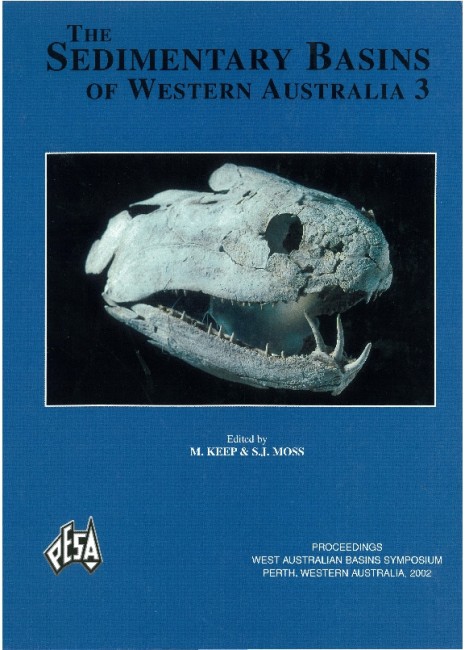Publication Name: The Sedimentary Basins of WA
Authors: L.B. Collins
Publication Volume: 3
Date Published: December 2002
Number of Pages: 41
Reference Type: Book Section
Abstract:
The North West Shelf is a modem tropical ramp, which is underlain by Cretaceous-Tertiary carbonates, with clastic reservoirs at depth. Coral reef systems, discontinuously developed during the Late Tertiary-Quaternary, vary from fringing reefs to isolated reefs which rise from deep-ramp settings. Quaternary evolution of the reef systems is being documented using regional mapping, seismic imaging, coring and U-series dating. The well-constrained sea level data from the Houtman Abrolhos carbonate platforms {at 28-29?S) have also been applied to the North West Shelf reefs. The Ningaloo fringing reef at 20-2rS, records Holocene and Last Interglacial phases of reef growth in a tectonically stable environment. It overlies Tertiary carbonates of the Cape Range, which is flanked by uplifted Plio-Pleistocene terraces and reefs. Scott Reef {at 14?S) is a macrotidal, isolated reef which overlies a carbonate platform and a major gas discovery. Seismic profiles reveal a Last Interglacial {ca. 125,000 year) reef system, but reefs which apparendy grew to sea level are 30 m below present sea level, indicating significant subsidence in the Late Quaternary. Contemporary reefs grew during the Holocene in the accommodation space provided by subsidence and are up to 35 m thick. The Rowley Shoals (15-l7?S) comprise one of the most perfect morphological series of reefs known, and these emergent, annular reefs rise from depths of 200-400 m. Seismic profiles suggest Late Quaternary subsidence has been an important control on reef growth, while differential subsidence has influenced reef morphology.The spatial association between reef systems and hydrocarbon seeps and the reservoir potential of the Tertiary section are now receiving attention. As further exploration and development occur in and around coral reefs, and the level of management intensity increases, there is a need for better understanding of human and natural impacts (cyclones and coral bleaching), biological processes, and the geological controls on reef growth and
development, as part of management plans.


